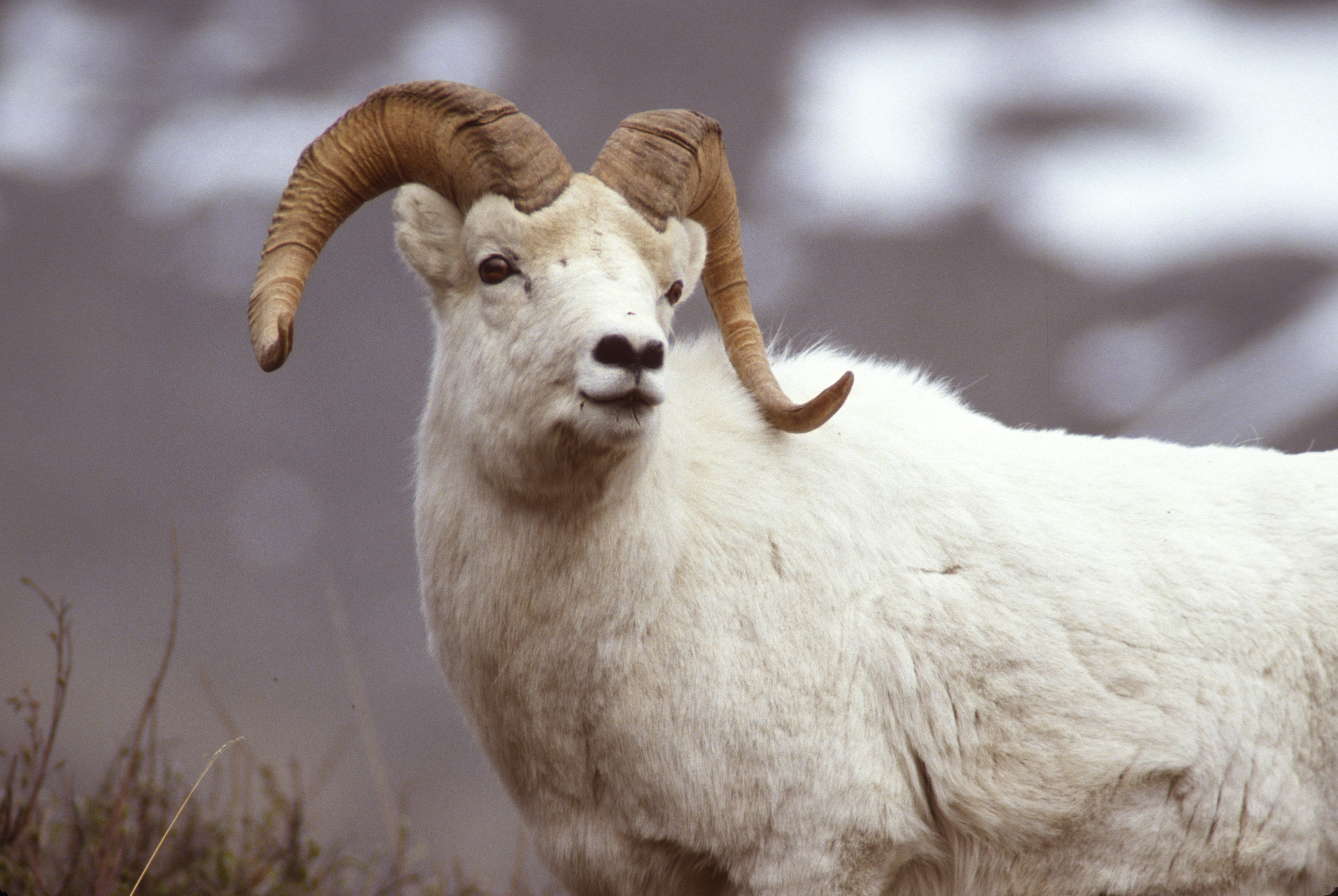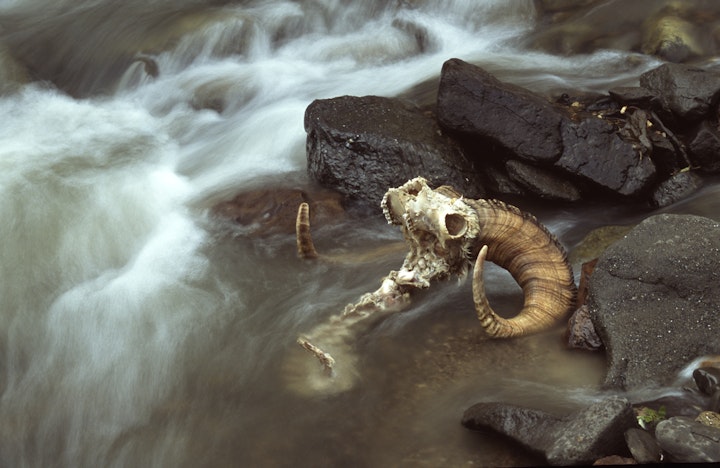
Dall Sheep ram in Savage River Canyon/Denali National Park/Interior Alaska/May/Film
More information on these proposals can be found on the Alaska Wildlife Alliance Website here:
Action Alert: Submit Your Comments on Statewide Board of Game Proposals
The following are my comments regarding Proposals 101, 126, 127, 128 and 147.
2025 BOG Comments
I wish to comment on Proposal 101 which would add Dall Sheep to the Intensive Management Statute.
According to the Division of Subsistence records, only 266 sheep across 36 communities are killed each year. This pales in comparison to the numbers of caribou (25,000), deer (10,000) and moose (7,000) that are taken each year.
Furthermore, Dall Sheep being found in difficult to reach mountainous areas and their relative small size when compared to caribou and moose makes the justification for this proposal dubious at best.
On May 9th of 2024, Alaska Fish & Game biologist Brad Wendling gave a presentation on Dall Sheep to Denali tour guides and drivers and NPS staff.
I audio recorded and posted the presentation here: Dall Sheep Presentation 5-9-24
In this presentation, Brad mentioned the start of a collaborative study with the National Park Service in Denali to study sheep both inside and beyond Denali’s borders.
This study is important as Brad mentioned that statewide Dall Sheep populations had in many areas, declined by 50-70%. Denali has also been severely impacted with a 2024 sheep population of 805 adult animals.
This would be one of the lowest populations of sheep in Denali since the 1940’s.
The decline in Dall Sheep populations is believed to be directly related to a significant increase in heavy snow/icing events during the winter and is attributed to global climate change.
This is not the first time such heavy snowfall/icing events had been reported. During Dr. Adolph Murie’s landmark study of sheep and wolves from 1939-41, Murie discovered that it was primarily heavy snow/icing events that caused Denali’s steep sheep decline from the 1920’s of 5,000-10,000 Dall Sheep to where they bottomed out at 500 by 1945.
It should be noted that Murie found that wolves were not responsible for this steep decline in sheep numbers but that it was due to heavy snow and icing events which sheep are especially vulnerable to.
It would later be mentioned that even as little as a foot of snow can prohibit sheep from reaching their food sources during the winter months. All of the above, makes Dall Sheep populations especially fragile to such conditions and weather events.
Furthermore, such conditions promotes poor body condition and record low population pregnancy rates of only 18-44%. Those lambs that do survive birth are generally born with low birth weight making them more vulnerable to mortality.
For reference, most ungulate populations have consistent pregnancy rates from 85-100% in healthy adult females.
Other changes are less precipitation impacting the quality of vegetation and the advancements of shrubs into alpine habitat crowding out those food sources.
When you factor in all of the above, it makes absolutely no sense to promote additional hunting of sheep when these populations are under such climate change threats. Nor would the killing of wolves improve this to any significant degree not only due to more intense winters but also changing vegetation within their habitat.
What is needed is a moratorium on all sheep hunting in those areas where significant population declines have taken place. Combine with this moratorium and there should be expanded studies on impacts to critical sheep habitat with its vegetation changes, continued studies on impacts caused by heavy snow/icing events with its inherent increased mortality, poor body conditions of winter survivors, poor pregnancy rates, mortality of lambs that survive the birthing process but are born with low birth rate, etc.
The reality is, is that Dall Sheep may be the most imperiled of Alaska’s larger species due to climate change. Ignoring climate change does not change its impacts to sheep (or other wildlife such as caribou) or to hunters.
It is time that the BOG recognizes these impacts and reacts accordingly in a positive manner.
Please vote No on Proposal 101.
Proposals 126, 127 and 128 - Night Vision and Thermal Optic Use
Proposals 126, 127, and 128 would allow the use of electronically enhanced night vision and forward-looking infrared devices (FLIR) for taking furbearers statewide.
Night vision goggles and FLIR devices allow trappers to more easily ID and locate animals through barriers such as snow and darkness. FLIR in particular detects infrared radiation emitted from a heat source and creates a picture instead of amplifying visible light. FLIR devices make it possible to detect the heat of animals against cooler backgrounds and are available in handheld cameras and cameras that can be attached to a smartphone, goggles, and rifle scopes.
Okay, let us take a brief look at some of the technology and allowances that is used to kill wildlife.
Planes, motor boats, all terrain vehicles, snowmachines, RV’s, high powered rifles with scopes, pistols, binoculars, guides, traps, snares, baits, longer hunting/trapping seasons, higher bag limits and for trappers - they are not required to check their traps/snares and can in fact leave an animal legally in a trap for days, weeks or months.
Additionally, they can saturate an area with an unlimited number of snares.
They can place these traps/snares near multiple use/ski trails, parking lots, campgrounds, pullouts, beach access areas, nor are they required to warn the public with signage or include contact information. Nor are they required to compensate dog owners for any injuries or deaths that their traps or snares cause.
The BOG has essentially tried to make hunting and trapping as easy as possible to kill a wide variety of wildlife and to do so in many different unethical ways.
Since when was hunting and trapping ever supposed to be easy? In its purest form, it is about using the knowledge, skill, and perseverance of the hunter against the animal while providing for the real possibility of the animal escaping.
Fair chase is what makes hunting, hunting. Without it, it is just killing without ethics, respect for the animal, or respect for the land. It is selfish consumption without regard to anything beyond death to that animal.
Allowing the use of night vision googles and FLIR devices continues and expands that lack of respect further. It makes a mockery of the concept of fair chase and ethical hunting and trapping practices.
I encourage you to reject these three disgraceful proposals and to further promote ethical hunting/trapping practices.
Proposal 147 - THE DEPARTMENT OF FISH AND GAME PROPOSES TO HAVE THE BOG DELEGATE ITS AUTHORS TO MANAGE 5 AAC 92.029, COMMONLY REFERRED TO AS THE CLEAN LIST, TO THE COMMISSIONER
I ask that you oppose this proposal.
Sincerely,
Bill Watkins
